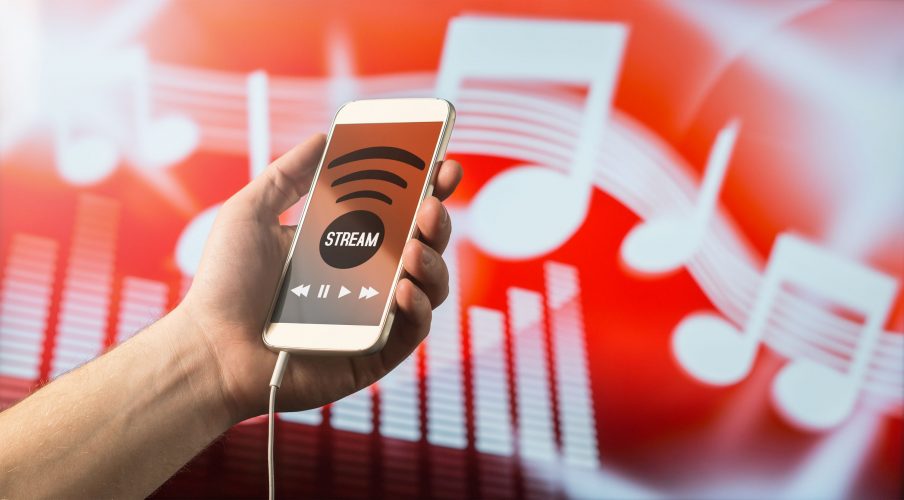
Radio is the number one source for new music discovery. The raft of new technologies and devices are opening up new discovery methods, but also providing new ways for radio stations to deliver content – most notably via streaming. 37% of music listeners say that one of the things they like most about listening to traditional radio – and that adds to the enjoyment of the music – are the DJ’s (Nielsen Entertainment’s 2017 U.S. Music 360 Highlights).
According to the latest Nielsen Entertainment 2017 Music Year-End Report for the U.S., the surge in streaming continued throughout 2017, topping all forms of music consumption (Albums + Track Equivalents + On-Demand Audio streaming Equivalents). Streaming continued its leadership over downloads as the dominant music consumption platform of 2017, fueling the music industry’s overall volume growth of 12.5% year over year. The increase was led by a 58.7% increase in On-Demand Audio streams compared to 2016.


The addition of streaming data to the Billboard Hot 100 chart, which both reflects and drives hit radio playlists, means that streaming is now playing an important part in determining which songs are played on radio. Radio programmers today are influenced by traction demonstrated by artists and songs performing well on streaming services.
In addition, according to Nielsen Entertainment’s 2017 U.S. Music 360 Highlights, this year’s headlines also include these great findings:
- PLAYLISTING/CURATION IS ON THE RISE.
- 38% agree that playlists are an important part of their streaming experience
- MORE LISTENERS ARE DISCOVERING MUSIC; TOP SOURCES FOR MUSIC DISCOVERY:
- 49% AM/FM “over the air” radio
- EXCLUSIVE CONTENT IS A PRIZED ASSET.
- 18% of those who discover music through online services regard “best exclusive content” as one of the top 5 most important factors in the selection of service.
- AS STREAMING INCREASES, RADIO CONTINUES TO HOLD ITS OWN.
- 72% of online music streamers listen to some form of radio
- TECHNOLOGY IS CHANGING MUSIC HABITS AT HOME AND IN-CAR.
- New technologies and the latest devices are enabling listeners to seamlessly engage with music anywhere, any time
- MAJOR BRAND OPPORTUNITIES AS SOCIAL AND STREAMING SERVICES INTERSECT.
- For brands, as well as artists and bands, live music events – concerts, tours and festivals – continue to be essential elements in reaching fans.
Music is most of what’s on radio and drives tremendous value in terms of ad sales and EBITDA (Earnings Before Interest, Taxes, Depreciation and Amortization) for the radio industry. EBITDA can be used to analyze and compare profitability among companies and industries as it eliminates the effects of financing and accounting decisions. EBITDA is often used in valuation ratios and compared to enterprise value and revenue. Radio programmers today are influenced by traction demonstrated by artists and songs performing well on streaming services. Record companies understand this very well. Music is the lifeblood of the radio industry. It represents the vast majority of all content on AM/FM radio.
And radio reaches, engages and retains the largest audiences and generates annual revenues twice the size of the recorded music industry (See below for Nielsen Stats).

Radio plays an important role for the music industry in helping new artists get discovered and established artists remain in the limelight. Countless artists and record label executives have praised local broadcast radio for its role in exposing the public to new music, driving album and merchandise sales, and filling concert venues.

